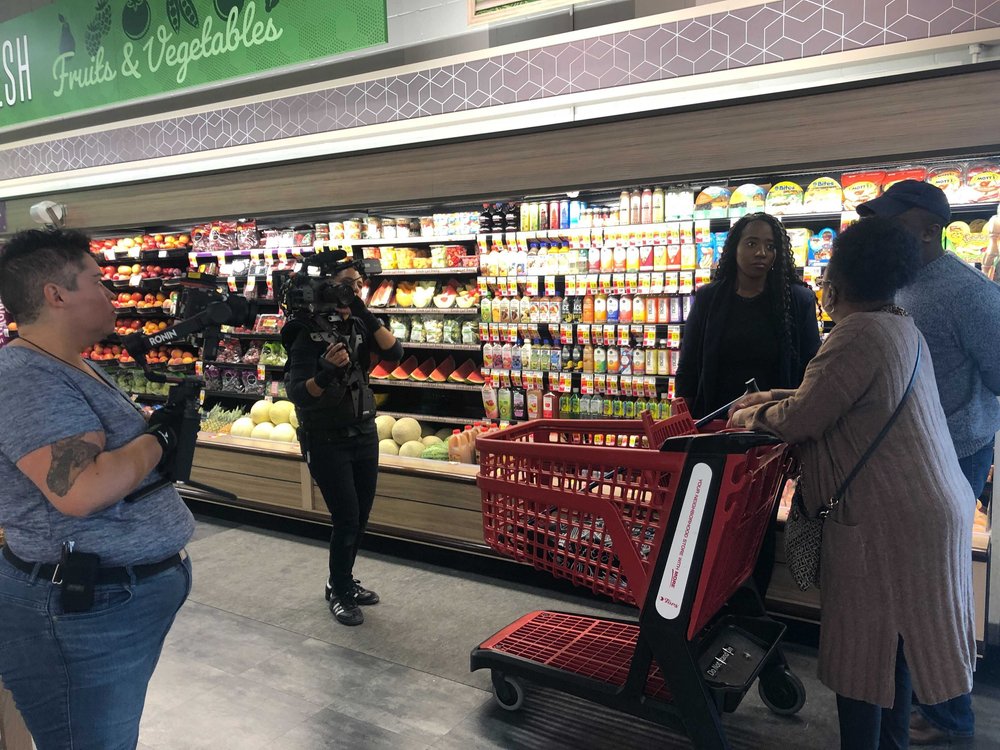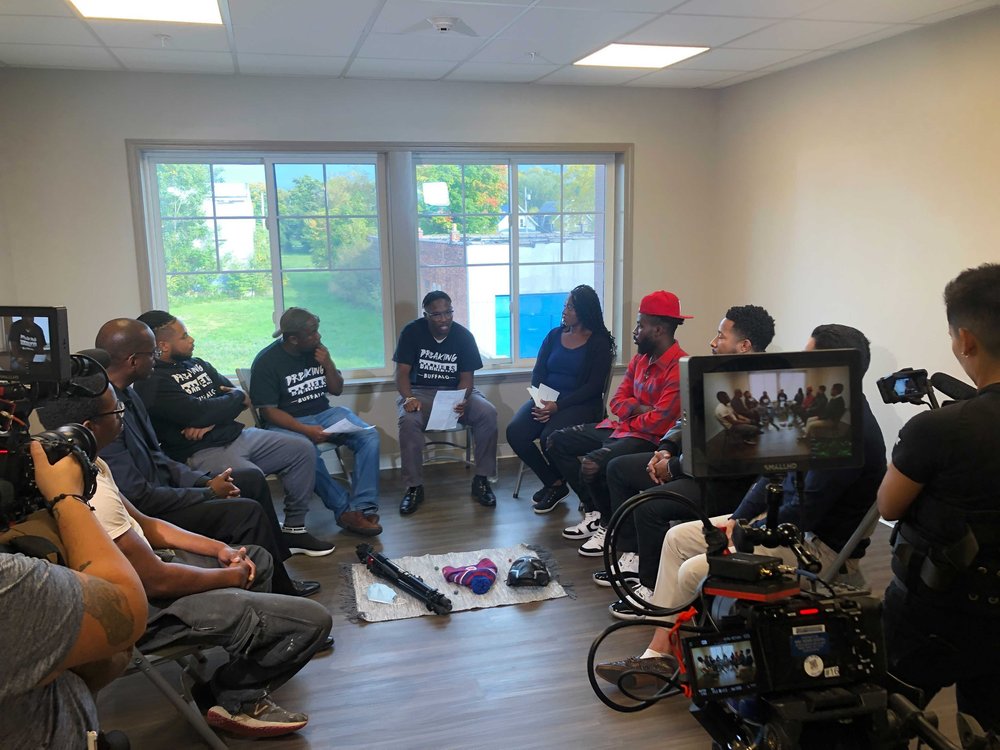
When a white gunman opened fire inside the Tops supermarket in Buffalo, New York, last May, I couldn’t comprehend what would motivate an individual to take 10 Black lives besides pure evil and hate. And after reporting on the incident, I pondered how residents would recover from this tragedy and what they would do to heal – if that was even possible.
Incidents like Buffalo have echoed throughout history — like in 2015 when a racist gunman killed nine Black people attending an AME church for Bible study in Charleston, South Carolina; or in 1921 during the Tulsa Race Massacre in Oklahoma, when mobs of white people attacked Black businesses and homes while killing hundreds of Black people. For Buffalo’s east side community, which is over 60% Black, the shooting only exacerbated challenges of food insecurity when the supermarket temporarily closed. The violence, paired with decades of racist policies that resulted in low employment, education, income and homeownership rates, seemed like just too much for the community to bear. When media outlets began dispersing after covering the shooting, the community was left with the responsibility to grieve and heal on their own.
On this National Day of Racial Healing, an annual observance created by the W.K. Kellogg Foundation aimed at bringing awareness to racial equity through racial healing, it is a time for the nation to reflect on the violence minority communities face fueled by racism. For residents of Buffalo, their ability to band together and support each other as a community exemplifies more than the trauma they’ve faced. Traveling with NBC’s Race, Equality and Justice unit last October, I witnessed community members create safe spaces for each other to share their feelings and establish more food resources to revitalize their neighborhood.
During my time in Buffalo, I met Malik Stubbs, 28, and his mother Anna Smith, who both lived in the community their entire lives and shared with me the somber reality of ongoing trauma.
“People are still hurt,” Stubbs told me last October when I asked him about the atmosphere of the community. “Ten innocent people lost their lives. And it’s just that, you don’t have to be related to them just to care about this issue. We need more resources and more opportunities to help us grow from this experience.”
One morning, I tagged along on a routine grocery run to Tops with Stubbs and Smith. At first glance, you would never expect the supermarket to be the previous site of a massacre, with its newly renovated interior and organized assortment of grocery products. But near the front of the store is a memorial and fountain remembering those who lost their lives on May 14. It’s a sight that reopens emotional wounds for the mother and son. When the store finally reopened after the shooting, Smith, who knew some of the victims of the shooting, said she stood outside of the store for 15 minutes before heading inside. “I thought about how I walked in the store, and the families and people that I knew would be right there,” Smith said. “But then when I knew they weren’t going to be here…it kind of hurt me to my heart.”

As a member of Breaking Barriers, a group that advocates for young men of color to be social and racial justice leaders in their community, Stubbs co-facilities healing circles for Black men living on Buffalo’s east side. These healing circles allow them to be vulnerable and share everything that’s on their minds — whether it’s emotional challenges related to the shooting or everyday obstacles they face as Black men trying to navigate the world. I had the opportunity to join a healing circle, one of the most memorable experiences during my time in Buffalo — not only because it was a place where Black men openly shared their feelings, something that is rare to see, but also because it was a space where they could do so free of judgment.
I watched a group of men form a circle in the middle of a room. At the center were props, colorful stones and other items, used to uniquely guide discussions. As a starting point, Stubbs provided an inspirational quote and then asked how people are feeling since the shooting. Jamien Eutsey, Stubbs’ friend who also co-facilitates healing circles, reflected about the victims and how “that really could have been anyone.” “And I think that’s what haunts me to this day,” he said. “That it’s sad that, like, the color of my skin, is the reason why someone wants to take lives or do things of that nature.”
Despite the challenges the east side community has faced, Stubbs and those in his healing circle have a positive outlook on the future. For some, resilience looks like surrounding themselves around family and friends who genuinely care for them. For others, it also includes having faith and seeking out mentors in the community who will help them navigate life. But they all agreed on one key element in building a better future: investing more time, energy and resources — like grocery stores — into their community.
While the journey to racial healing won’t happen overnight, the work community members in the east side are doing shows me it’s possible. In fact, it’s already happening — and it will take the whole nation, including those from outside the community, to ensure it helps eradicate racism.
Editor’s note: The reporting in this article is part of an editorial initiative sponsored by WKKF, featuring content across NBCUniversal News Group platforms.


